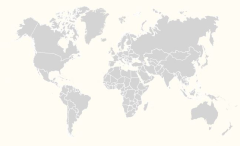By profession he was an explorer and taxidermist, but he was completely dedicated to art and beauty, and was himself a skilled sculptor, talented painter, and a sensitive writer. During his life span of 62 years he alone lifted his beloved taxidermy from a shoddy trade to the fine arts.
Background
He was born on a farm in Clarendon, N.Y. Reared in what was then a wilderness in upper New York State, he learned to love the forest and lived much of his youth within it studying the habits of wild creatures.
During his early boyhood Akeley grew incensed at the shabby manner by which taxidermists of his day stuffed and mounted animals into distorted shapes with crude stitchings. He was astounded that such creatures of beauty could be made to appear so unreal and ugly, not faintly resembling the graceful inhabitants of the deep woods.
Career
He became imbued with a lifelong desire to mount animals for museums and scientific institutions that would come alive with their original charm and beauty, and reveal something of the atmosphere from within the great forest. Through years of painstaking experimentation and endless research he finally developed a method and gave to the world his results.
His belief at the outset was that to become a true taxidermist, one had first to live out an apprenticeship in the forest, studying the animals to learn their intricate habits. A taxidermist needed to be an explorer, a skilled sketcher and painter, a sculptor, and a thorough photographer. But above all, he must love animals and the world of forest and jungle.
The Carl Akeley method of mounting animals has to this day basically never been improved upon. The desirable specimen of animal is selected. Then it is photographed in its various actions and moods. After it is captured, it is extensively measured. It is skinned from the inside, with only two special incisions made so as not to mar the animal's beauty. From the measurements, a muslin model is made over wire mesh. The final step is to stretch the original skin over the model so that is reassumes its natural lifelike appearance.
Connections
He was an intimate friend of President Theodore Roosevelt and George Eastman of Eastman Kodak.




